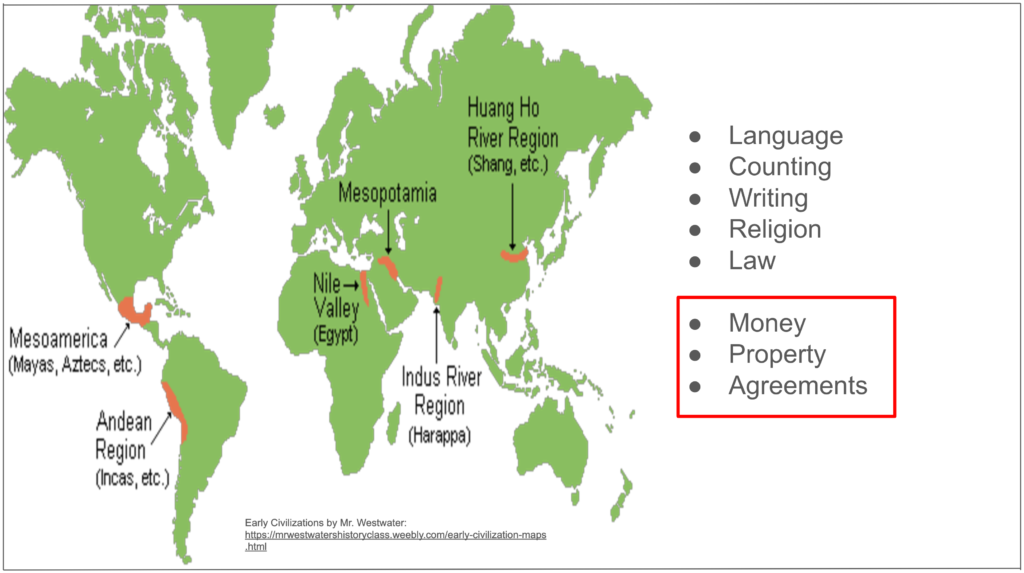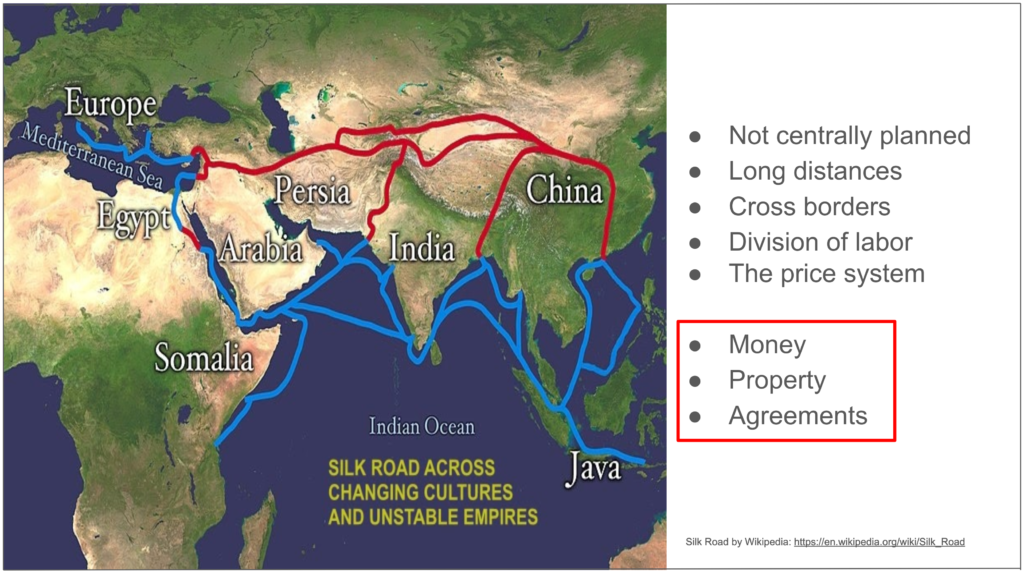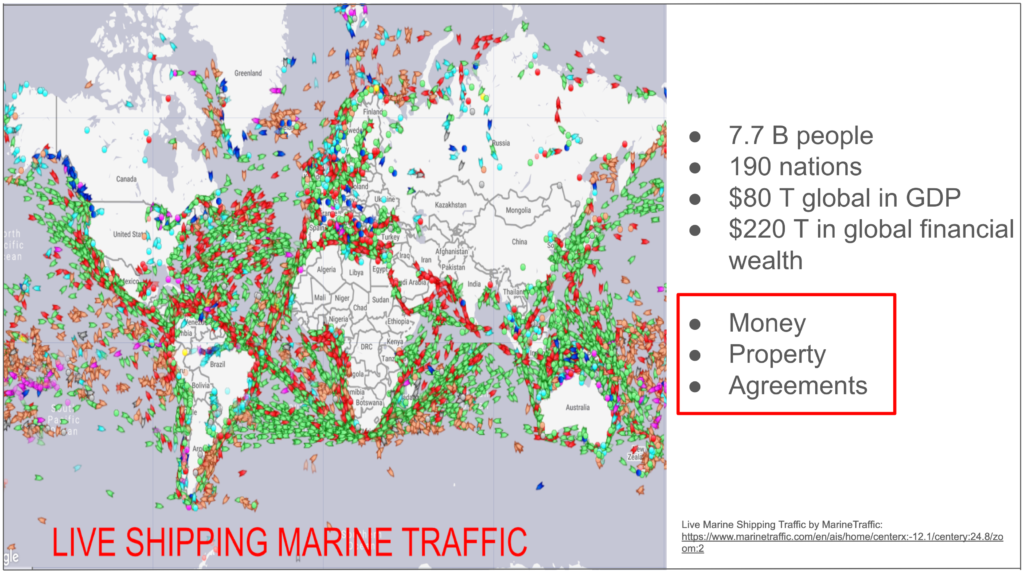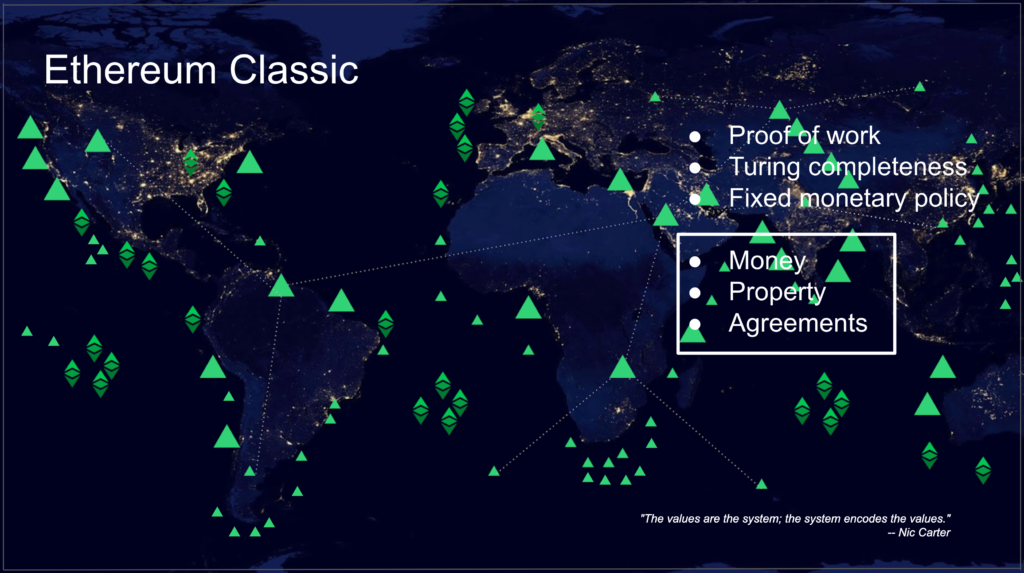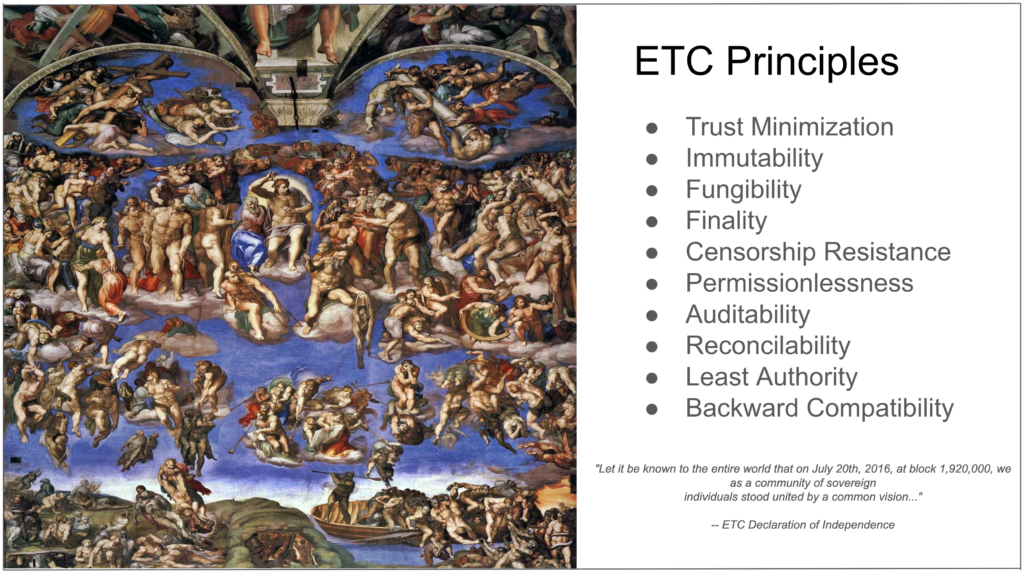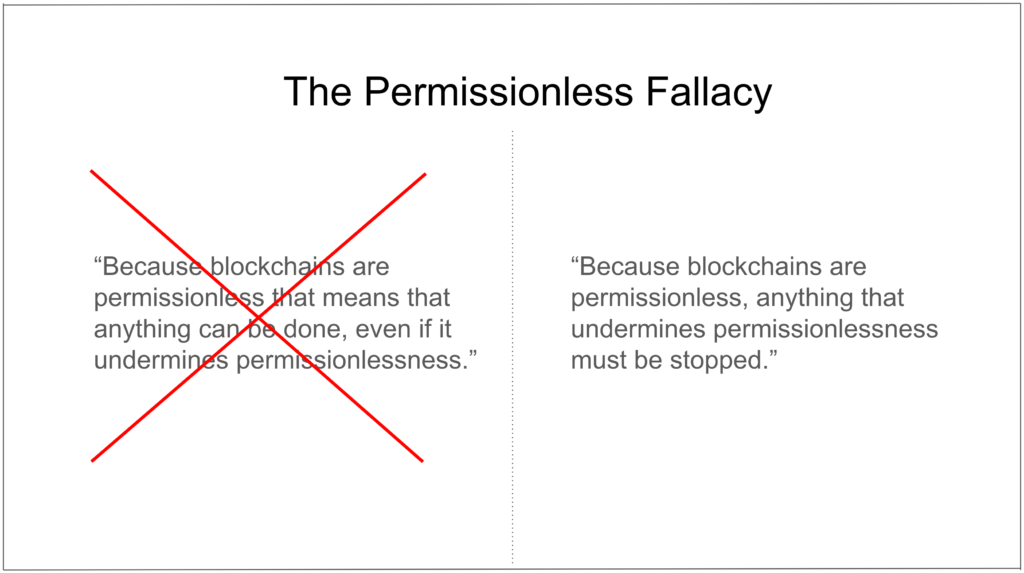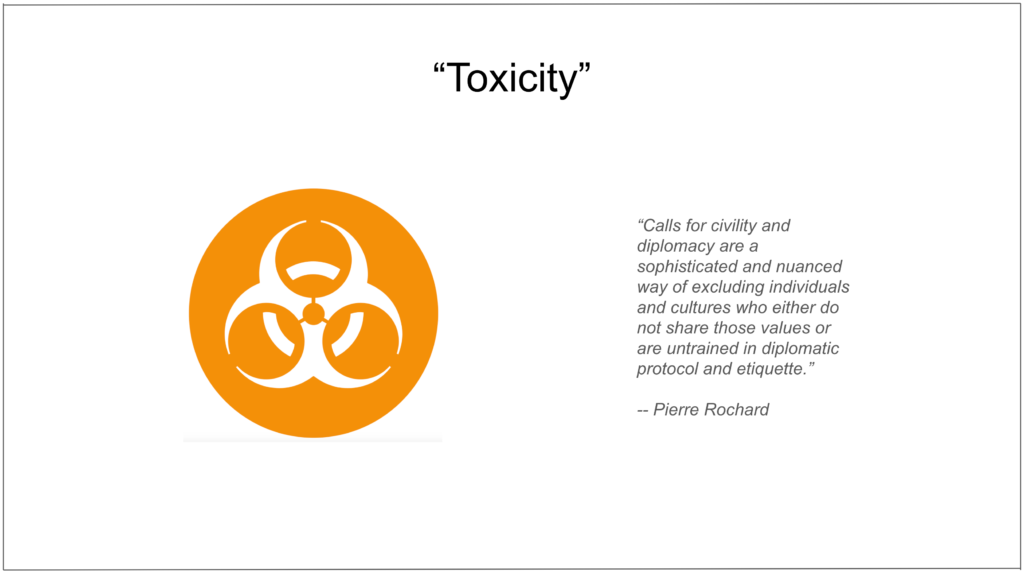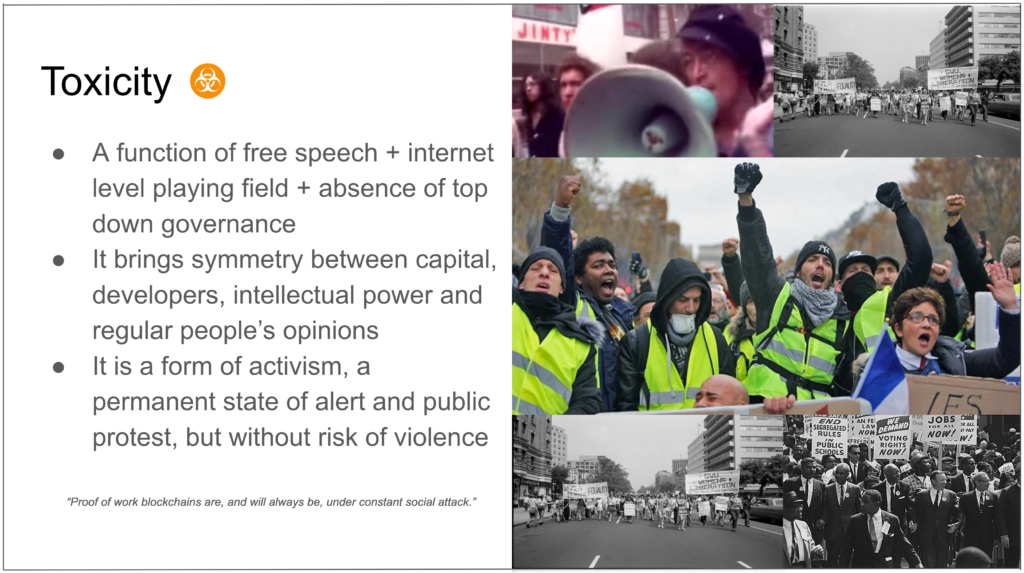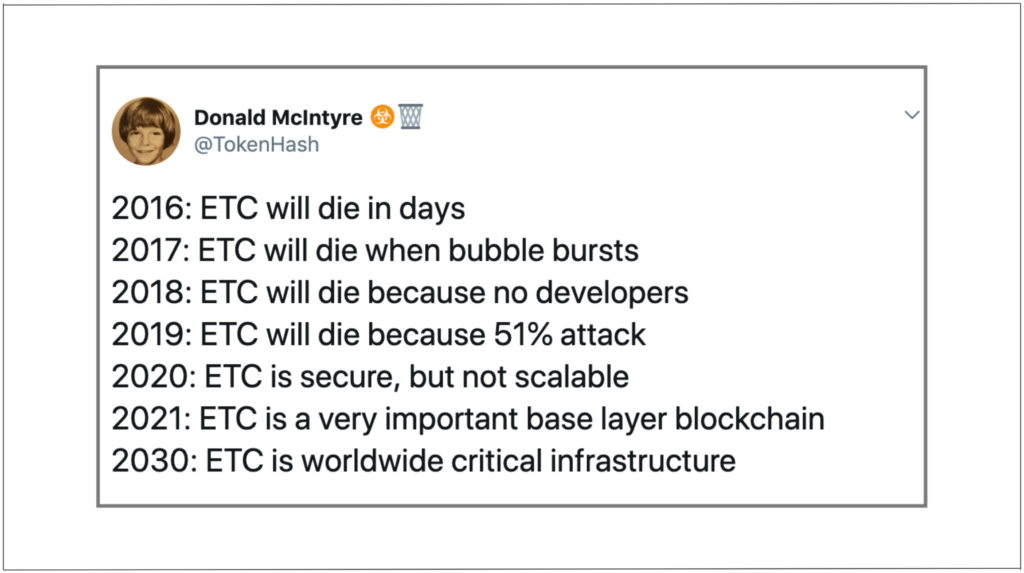You can listen to or watch this article here:
This is part one of a three part series:
• Part one: Ethereum Classic Principles
• Part two: Ethereum Classic Vision
• Part three: Ethereum Classic Opportunities
The series is a talk that I wrote about Ethereum Classic (ETC). Following is the segment about ETC principles.
This is Homo Sapiens in the last 200,000 years. Previous to Sapiens, it is very likely Homo Erectus was using stone tools as money, respected property of other clans and tribes in the form of territory, and had implicit and explicit agreements with other clans and tribes for various functions, such as hunting spaces, access to water, a primitive form of division of labour, and other conflict minimization strategies.
Sapiens very likely used the same, albeit more advanced forms of money, property and inter-clan agreements, to make their expansion even more efficient and scalable.
In the last 12,000 years, the emergence of formally protected basic rights through law was the result of agglutination in population centers. Civilizations needed further development of language, counting methods, writing, religion, and legal systems.
These cultural advances affirmed the technologies of money and further delineated property and agreements.
Our expansion and population growth, combined with more efficient tools and basic rights protections, such as money, property, and agreements, enabled long distance platforms like the Silk Road.
The Silk Road was a decentralized, cross border commercial system, that enabled increased specialization across regions and cultures, using emergent communications strategies, such as the price system, for signaling supply and demand states along different links of the decentralized value chain.
This has been a steady pattern to the present day, where the species has grown to over 7.7 billion people, in 190 nations, with $80 trillion dollars in global GDP, and $220 trillion dollars in global financial wealth.
The above is a live image of marine shipping, which is part of a global commercial system that trades over $19 trillion dollars per year.
However, this commerce is primarily agreed, performed, settled, and adjudicated through trusted third parties.
This not only implies a large cost and risk, but also the absence of trade that would otherwise exist were it not for socially unscalable centralized platforms.
The natural next step are trust minimized blockchains such as Ethereum Classic.
ETC is the emergence of a new system of money and formally protected basic rights, such as property and agreements, but this time through secure cryptographic protocols.
The key of Ethereum Classic is its security through sound design choices, such as proof-of-work, as the consensus mechanism; Turing completeness, to provide generalized functionality in a safe environment; and a fixed monetary policy, to protect property rights and ensure that users can count on a reliable store of value and medium of exchange.
However, these basic rights and features can only be guaranteed only if the most strict principles are followed.
For this, ETC has shown to have, still has, and will continue to have for the foreseeable future, a strong culture of security through strong principles.
Each of these principles has a specific function in guaranteeing sound money, property, and agreements on the platform, even in the absence of higher authorities, which is precisely the desired state of affairs.
However, strong principles sometimes can present apparent contradictions. For example, there is something I call the “permissionless fallacy” which is the idea that “because blockchains are permissionless that means that anything can be done, even if it undermines permissionlessness”.
Of course that must be wrong because, if it were true, ETC would cease to exist.
Just like free markets, money, property, and agreements require strong underlying systems, permissionlessness has to be protected by the ecosystem.
The correct argument is that “because blockchains are permissionless, anything that undermines permissionlessness must be stopped”.
This brings me to a delicate issue in secure blockchain ecosystems…
Toxicity.
In systems that seek to dissolve top down leadership and governance, to uphold etiquette and diplomacy, rather than safety, is a security hole.
What is regarded as “toxicity” is a function of free speech, the level playing field the internet creates, and the absence of top down governance that I mentioned before.
With no top down governance the only way of protecting blockchain integrity in the social layer is to have symmetry between players with capital, developers, and intellectual power, relative to regular people who may not count with those resources, but who many times are right.
A way of looking at what is seen as “toxic behavior” in the blockchain industry is to regard it as a permanent state of alert, online activism, and public protest, but without the risk of violence.
And it works…
…if not, just see all the times ETC should have died!
But, it’s alive and will, in fact, be critical infrastructure in the future.
To read other parts of this series please follow these links:
• Part one: Ethereum Classic Principles
• Part two: Ethereum Classic Vision
• Part three: Ethereum Classic Opportunities
Code Is Law

